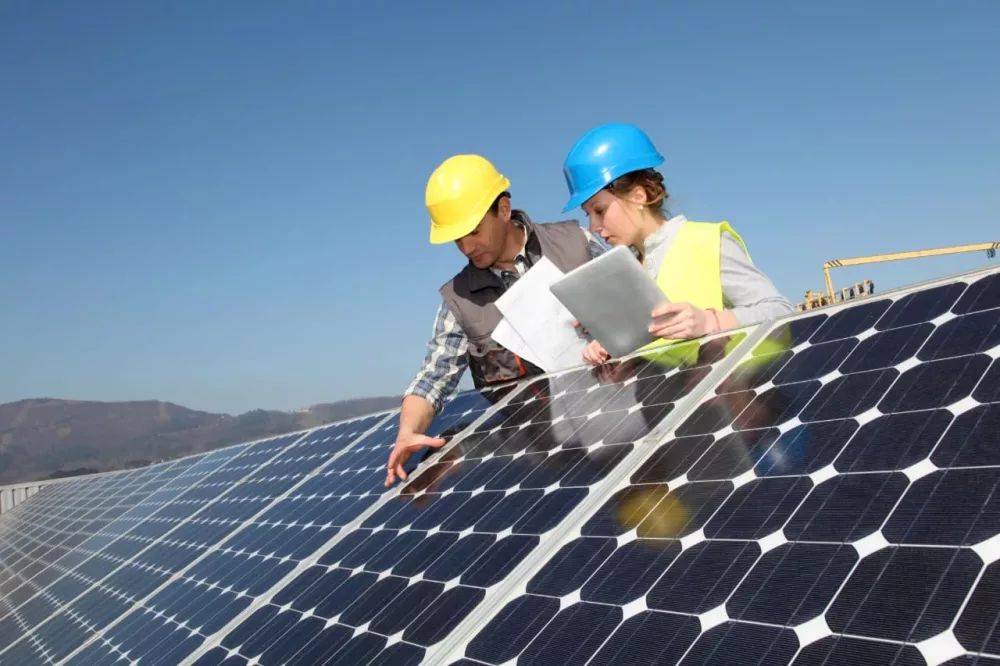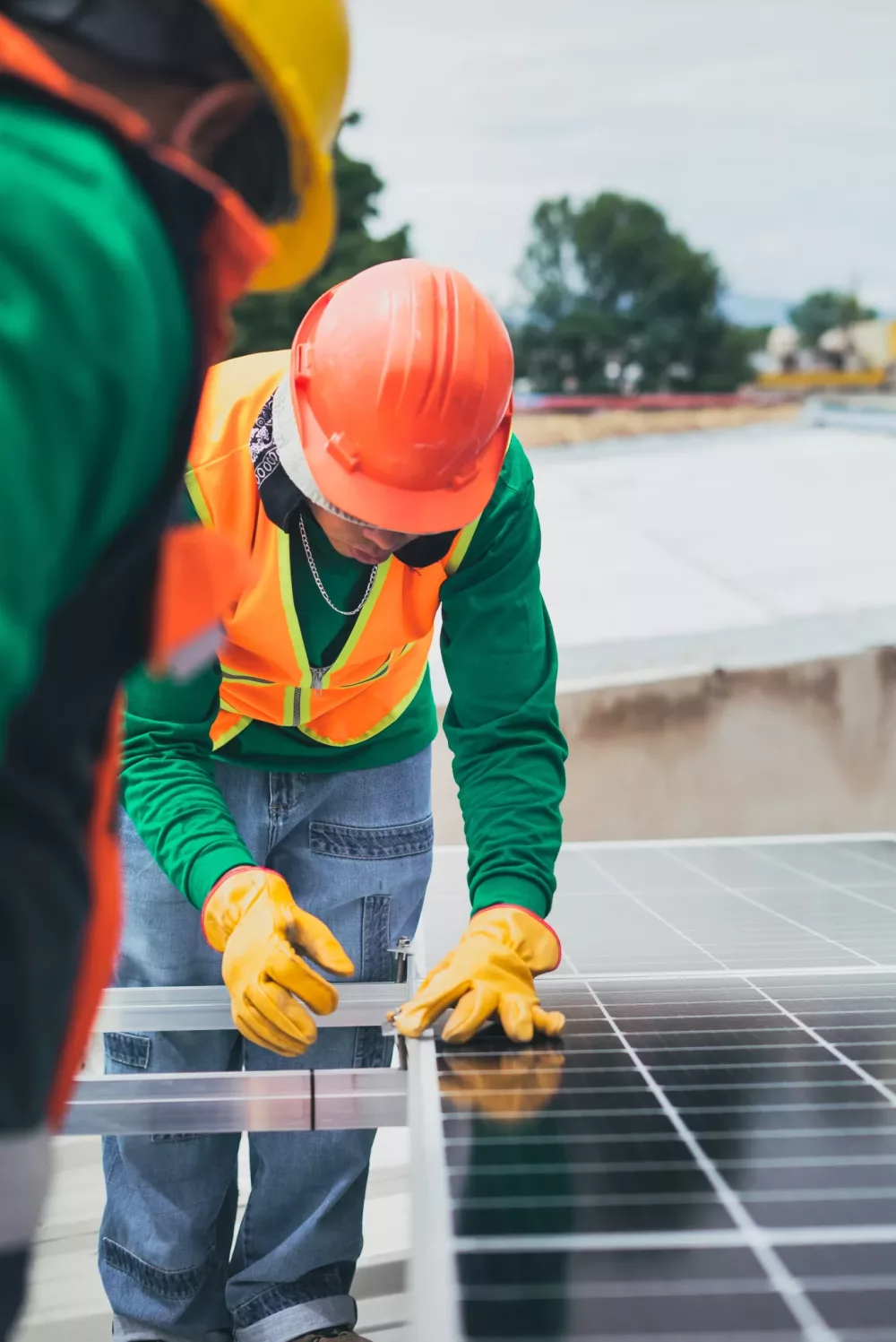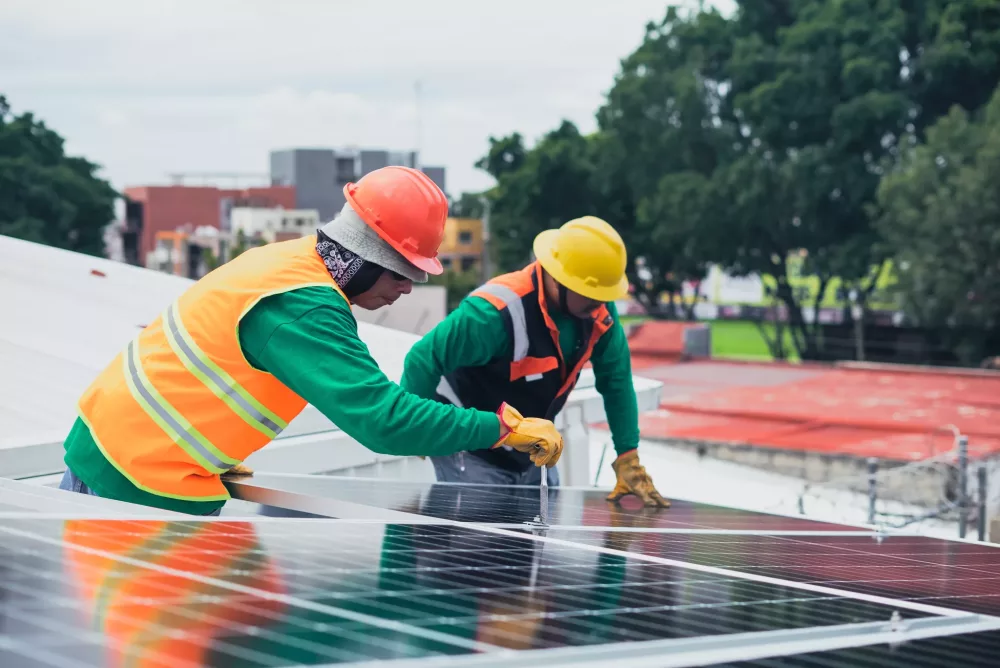It is important to choose the correct solar panels for your home or business. Here is a quick guide to the different types of solar panels.

A Guide to the Different Types of Solar Panels
Are you tired of paying outrageous utility bills? Are you sick of spending hundreds of dollars each month on your electric bill? Do you want to take charge of your electricity costs? If so, it is time you consider installing solar panels in your home. Solar energy is clean and efficient; with solar panels, you can generate your own power. You can save energy, breathe easier, and feel good about a clean and natural energy source. And once you get a solar panel system installed, there is very little upkeep required. Your solar panels take care of themselves and are worry-free for many years.
If you want to brief up a little before scheduling an appointment, this article is for you. Here are the top types of solar panels and which one might be right for you.
Monocrystalline Solar Panels
Monocrystalline solar panels are the most efficient type of solar panels. They are the most reliable type of photovoltaic (PV) cell. Monocrystalline solar cells are made of a single layer of the silicon cell.
It is cut from a cylindrical ingot of molten silicon. This gives them a distinctive look due to the geometric pattern imprinted on the cell.
Monocrystalline solar panels are known for their durability. They are able to handle extreme weather conditions without affecting their performance. These solar panels last longer than other panel types. This makes them an ideal power source for long-term engagements.
Monocrystalline solar panel systems also need less installation space compared to other models. It saves time and money for solar panel owners. Monocrystalline solar panels produce a higher power output per square footage. They are made up of larger and more efficient silicon wafers.
This means a smaller solar panel collection is needed to produce the same amount of energy. It will result in greater cost savings over the long term. Monocrystalline solar panels are the most durable type of panels available. It has a longer lifespan of up to 25 years or more.
Polycrystalline Solar Panels
Polycrystalline solar panels, also known as multi-crystalline silicon solar cells. These are solar panels composed of many small crystallites. They are the most used type of solar panels. These are recognizable by the dotted structure within each cell. The characteristics of Polycrystalline solar panels are the following:
- smaller
- less expensive
- easier to install
- tolerant of temperature variations
They are more efficient when operating in higher-temperature climates. In contrast, their performance is lower than monocrystalline panels in low-light climates. Their output in full sun is good. Grid-tie systems are ideal with polycrystalline solar panels. They use the grid to balance their fluctuations in power output. Commercial applications need a higher efficiency from monocrystalline panels. For residential use, polycrystalline solar panels are the perfect option. They offer a strong power output, a budget-friendly price, and the ability to perform in a wide variety of climates. The benefits of polycrystalline solar panels include the following:
- lower installation costs
- higher efficiency,
- easier maintenance.
They are also more compatible with most existing systems. It can be scaled to meet the needs of any specific application. By choosing polycrystalline solar panels, homeowners and businesses can reduce their carbon footprint. They can also save money on utility bills, and help to reduce the impact of climate change. You continue reading here for more info about solar panels.
Thin-Film Solar Panels
Thin-film solar panels are a type of photovoltaic technology that converts light into electricity using a thin layer of absorber material. This technology is ideal for applications where space is limited, or the flexibility of the structure cannot support a large module of conventional crystalline photovoltaic panels. Thin-film solar panels are easier to install, with no hefty handles for carrying units, which makes them perfect for portable applications. Thin-film solar panels are also very durable, so they perform well in the harshest of conditions. However, they don't maintain the same output efficiency as crystalline technologies, and their features are generally geared toward rooftops and commercial solar systems. Consequently, these panels are not the best choice for residential installation. Thin-film solar panels actually convert more of the sun's radiation directly to energy, resulting in higher efficiency compared to traditional panels. Additionally, they are often more durable and require less maintenance, making them an excellent choice for homeowners who are looking for a cost-effective, low-maintenance solar energy system. Exploring the benefits of thin-film solar panels can help people realize the potential of this innovative form of energy production.
Passivated Emitter and Rear Cell
Passivated Emitter and Rear Cell (PERC) are the newest type of solar panel, released to the market earlier in the decade. PERCs are more efficient than older model solar panels, offering up to 20 percent higher energy output. PERCs are also less prone to degradation, meaning that their efficiency maintains for longer periods of time. Additionally, PERCs are able to be used in a variety of climates and are also known for their reliability. PERCs use a back contact layer, which makes them highly efficient, and their cells are physically inhibited from losing their efficiency over time. As a result, PERCs are quickly becoming a go-to choice for homeowners looking for the long-term advantage of higher energy yields. With the added benefit of easier installation, PERC solar panels are quickly becoming the new gold standard for solar energy.
Follow This Guide to the Different Types of Solar Panels
Solar panels are becoming a more popular way to reduce energy costs and help the environment. With the different types of solar panels that come with specialized benefits, homeowners can choose the best panel to fit their needs.
Investing in solar panels is an easy and eco-friendly option to lower your utility bill and make a positive impact on the environment. Make sure to choose the right and reliable solar company. Don't forget to browse our site for all of your home improvement needs.









Leave a Reply